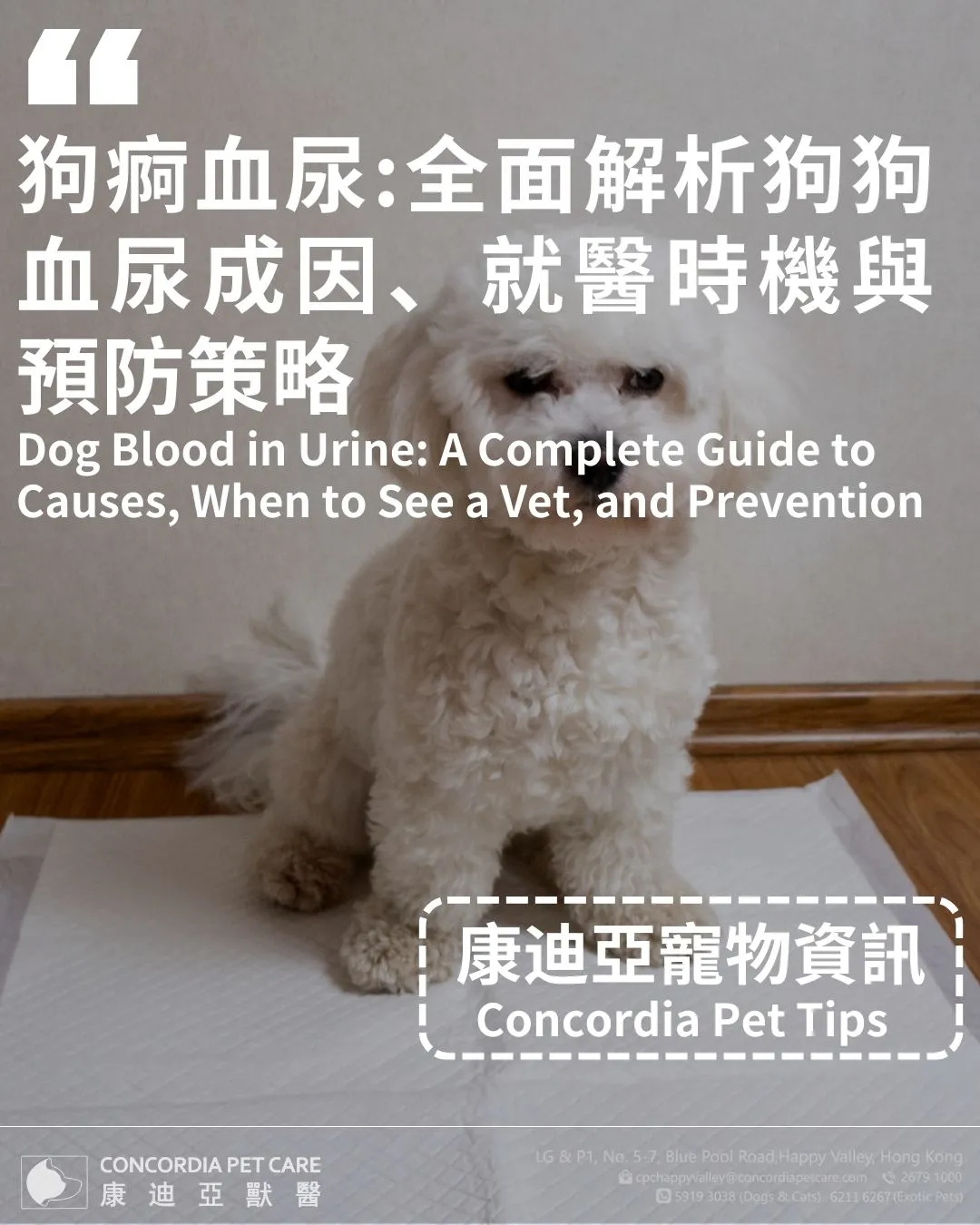
Preventing Fleas and Ticks on Dogs: Tips and Treatments
 Concordia Pet Care
Concordia Pet Care
 2025-10-25
2025-10-25


Fleas and ticks are more than just an annoyance; they present significant health dangers to our pets, making prevention essential. Here you will explore key concepts such as the importance of flea and tick prevention, how to identify signs of an infestation, and the most effective treatments available. We'll also offer lifestyle advice to help safeguard your dog from these pests and guidance on when professional veterinary consultation is necessary.
Fleas and Ticks
In Hong Kong, where outdoor activities are popular, it’s crucial for dog owners to be vigilant about flea and tick prevention.
Fleas are tiny, wingless insects that feed on the blood of their hosts. They can cause intense itching, leading to scratching and skin irritation. Flea infestations can also result in allergic reactions and transmit tapeworms, posing additional health risks to your dog.
Ticks, on the other hand, are arachnids that attach themselves to a dog’s skin to feed on blood. They can carry serious diseases, such as Lyme disease and ehrlichiosis, which can have long-term health implications if untreated. Ticks are often found in grassy or wooded areas, making outdoor adventures a potential risk.
Why Flea and Tick Prevention Matters for Dogs
Fleas and ticks cause discomfort, leading to itching, scratching, and skin infections, impacting your dog's quality of life. More seriously, fleas transmit diseases and tapeworms, while ticks carry pathogens causing conditions like Lyme disease. Prevention also protects your household, as infestations can spread to other pets and humans. Proactive prevention safeguards your dog and family.
Signs of Fleas and Ticks on Dogs
Intense itching and scratching are common signs of fleas. You might observe your dog biting or licking their skin, particularly around the ears, neck, and tail. Small, dark specks resembling black pepper, known as flea dirt, may be visible on your dog's fur. Red, inflamed skin or hotspots could indicate an allergic reaction to fleas.
Ticks are often more challenging to detect, as they can attach themselves discreetly. Check your dog’s skin, especially in areas like the ears, armpits, and between the toes. A tick may appear as a small, dark bump and can be the size of a pinhead or larger when engorged. If you notice your dog acting lethargic, having difficulty walking, or if they develop a fever, these could be signs of a tick-borne illness.
Best Tick Prevention and Treatments for Dogs
To protect your dog from ticks, a multi-pronged approach is most effective. Regularly apply tick preventatives such as collars, spot-on treatments, or oral medications. Additionally, be proactive by avoiding areas known for ticks, like tall grass, especially during warmer seasons. After any outdoor activity, thoroughly inspect your dog for ticks. Should you find a tick, remove it promptly to minimize the risk of disease transmission.
Lifestyle Tips to Protect Dogs from Fleas and Ticks
In Hong Kong's warm and humid climate, a proactive approach is crucial to protect your dog from fleas and ticks. Consider the following tips and keep your furry friend safe.
Regular Grooming: Brush your dog frequently to remove loose fur and check for fleas or ticks. Use a flea comb to catch any pests before they become a larger problem.
Preventive Treatments: For effective prevention, consistently use veterinarian-recommended flea and tick preventatives, such as topical treatments, specialised dog collars, or oral medications.
Maintain a Clean Environment: Regularly wash your dog’s bedding and toys in hot water to eliminate any potential fleas or eggs. Vacuum your home frequently, especially in areas where your dog spends time.
Avoid High-Risk Areas: Limit your dog’s exposure to tall grass, dense bushes, or wooded areas where ticks are more prevalent. If you do venture into these areas, conduct thorough checks after returning home.
When to See a Veterinarian
It is best to see a veterinarian for fleas and ticks immediately if your dog shows signs of severe discomfort such as excessive scratching, restlessness, or open sores from intense biting. Emergency vet visits are critical if symptoms include vomiting, diarrhea, lethargy, difficulty breathing, seizures, or collapsing, as these could indicate toxic reactions to flea/tick treatments or serious infections like tick fever. Pale gums, dark urine, weakness, or refusal to eat are signs for tick-borne diseases like Babesia, which can be fatal without prompt medical care.
For routine cases, veterinary consultation is important when fleas or ticks are observed on a dog, especially if the infestation worsens despite home measures. A vet can recommend effective treatments, confirm a diagnosis, and provide the best medications for the situation.
Tick fever, caused by parasites transmitted through tick bites, is common in Hong Kong and requires early detection and antibiotic treatment to avoid complications. Even if a removed tick does not appear infected, dogs bitten by ticks should be monitored for two weeks and tested for blood parasites by a veterinary surgeon.
Reach out to Us
Early detection and treatment are crucial for your dog's well-being. Maintaining a routine of regular checks, thorough cleaning, and preventive actions will help protect your dog from these irritating parasites. If you're worried, Concordia Pet provides 24-hour veterinary care, offering comprehensive check-ups and clear treatment plans to help you and your dog navigate this challenge with ease.
Frequently Asked Questions about Dog Tick Prevention
Can dogs go swimming or take a bath while on fleas and tick preventatives?
Most flea and tick preventatives are water-resistant, so your dog can typically swim or bathe while using them. However, if you're using a topical treatment, it's advisable to apply it on your dog up to 48 hours before swimming or bathing to ensure complete absorption. While collars are usually effective during swimming, frequent water exposure could shorten their effectiveness, necessitating an earlier replacement.
Are flea and tick preventatives safe for pregnant or nursing dogs?
Certain oral tablets and flea collars are generally not advised due to potential risks to both the mother and her puppies. However, topical spot-on treatments, particularly those containing ingredients such as Fipronil and (S) Methoprene, are often regarded as safer alternatives.
How often should dogs get flea and tick prevention?
For effective, continuous protection against fleas and ticks, putting your dog on a monthly preventative treatment plan is generally recommended. This is especially important in regions with mild climates such as Hong Kong where pests can thrive year-round. While some medications, like certain collars or oral treatments, can provide protection for three to six months, monthly treatment remains the most common and recommended approach.
How long does it take to get rid of ticks and fleas on dogs?
Flea and tick treatments work quickly, with adult fleas often eliminated within 24 hours. Ticks may take 12 to 48 hours to be killed, depending on the product used. For complete eradication, including eggs and larvae, several weeks may be required, in conjunction with thorough environmental cleaning.



